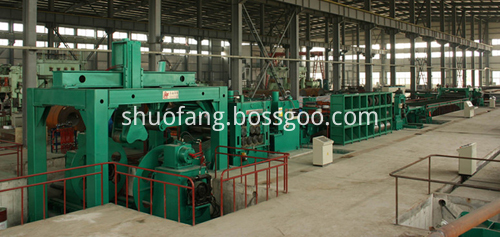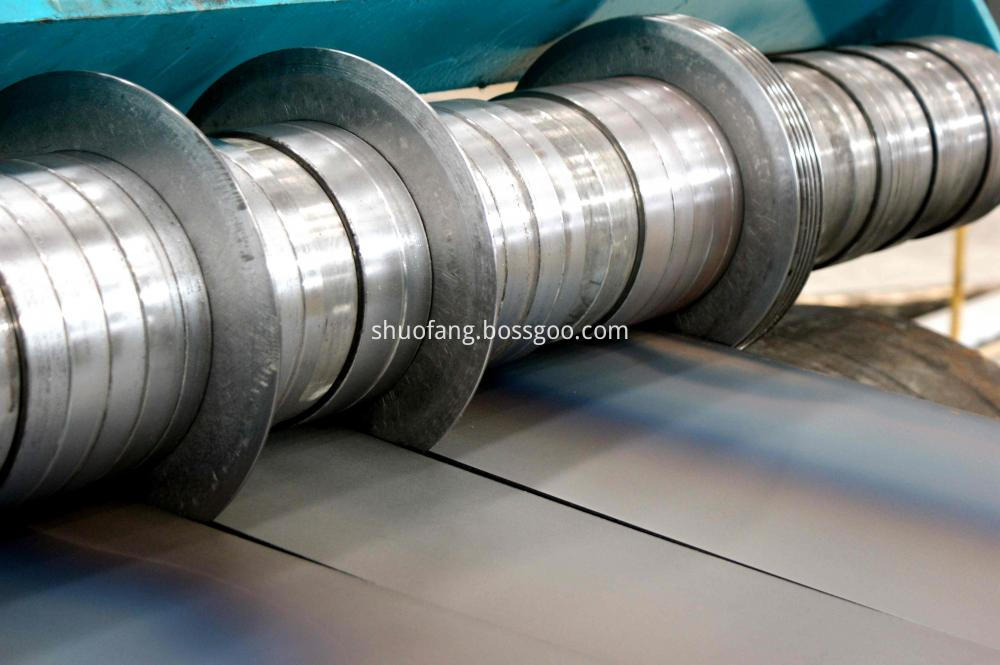Phytase is a feed enzyme that hydrolyzes phytic acid in feeds to release available phosphorus, thereby reducing the amount of inorganic phosphorus used in monogastric feeds and reducing phosphorus in animal manure. Pollution. Therefore, phytase is a good feed additive in terms of social and economic benefits, and it is also a promising feed enzyme.
1 Introduction
Since the beginning of the 21st century, the feed industry has made tremendous progress. The application of various feed enzymes in the feed greatly improves the utilization rate of the animal. Phytase is studied in various feed enzymes and used in practice. Phytase is a generic term for a class of enzymes that catalyze the hydrolysis of phytic acid and phytate to inositol and phosphate (or salt). According to the International Committee of Biochemistry and Biomolecules, phytase can be divided into two types: The species is phytate-3-phosphatase (EC 3.1.3.8) and the other is phytate-6-phosphatase (EC 3.1.3.26). It is a new type of feed additive. Adding phytase to plant feeds and releasing phosphorus from phytic acid can not only improve the absorption and utilization of plant phosphorus by food and feed, but also degrade phytate protein. Harmony, reduce the chelation of phytate to trace elements, improve the animal's utilization of plant protein and the nutritional value of plant feed, reduce the content of organic phosphorus in animal waste, and reduce pollution to nature. Phytase has been discovered by Suzuki et al. since 1907 and has been commercialized by Gist-Brocades in Europe in 1993, spanning 87 years. During this time, the study of phytase has been extensive, including the characteristics of phytase, molecular size and the active center of action, all have detailed information. Among them, Wodzinski and Satyanarayana discussed the production, characteristics and application of phytase in detail. Yiet al. 1994 established that by adding phytase to pig feed, the amount of phytic acid in the excretion can be reduced, and the amount of inorganic phosphorus added is also reduced to 1-2 g/kg. Simons et al.'s 1990 study showed that the addition of phytase significantly increased the digestibility of calcium and phosphorus in animals, thereby reducing the amount of phosphorus excreted. However, adding a large amount of phytase to the feed will increase the cost of animal feeding. Therefore, how to reduce the commercial price of phytase is also an urgent problem to be solved in the enzyme industry.
According to research, the content of phytic acid in beans, cereals, oilseeds and pollen accounts for about 1% to 2% of the total edible material. Phytic acid is an organic acid. Physic acid was first discovered by Preffer around 1872, and then in 1903, Postermak was the first to explore phytic acid. Phytic acid is called phytate, a yellow liquid that is strongly acidic. Its molecular formula is C6H18O24P6 and its molecular weight is 659.86. It can form insoluble complexes with metal ions such as calcium, magnesium, zinc, copper, etc. (Morris, 1986), and can also form insoluble salts with proteins (amino acids) under acidic and neutral pH conditions (Thompson, 1986). In view of the strong complexing ability of phytic acid to metal ions and the formation of stable complexes with metal ions that cannot be absorbed by animals (Kratzer, 1986), phytic acid is a harmful component in feed that affects the performance of livestock and poultry. According to a 10-year study by the University of Kentucky, pigs can only use 10% to 12% of phosphorus in corn, 25% to 35% of phosphorus in soybean meal, and only 15% of phosphorus in typical pig diets; The utilization of phosphorus in corn and soybean meal is lower than that of pigs. It is clear that about 85% of the phosphorus is excreted from the feces, causing pollution to the soil and water. On the other hand, it is also necessary to add inorganic phosphorus salts to the diet to meet the daily demand for phosphorus in livestock and poultry, resulting in waste of phosphorus sources. At the same time, with the development of society, an essential requirement for agriculture now is to reduce the environmental pollution caused by agricultural production. In agriculture, a large number of animals are raised, which increases the pollution of the environment. For animals, phosphorus in excreta is an important pollution. In the feed, about 60% to 80% of the phosphorus forms phytate. This substance is an inorganic salt. Monogastric animals cannot be digested, and ruminants such as camels, sheep, and goats can only digest part of them. When phytate is excreted from animals, it can be degraded to phosphorus by microorganisms in the water, resulting in environmental pollution. In Europe, regulations now limit the amount of phosphorus in animal waste, requiring strict penalties if the specified range is exceeded. The United States will soon implement similar regulations, and other countries and regions have implemented similar regulations. These regulations have prompted farmers to reduce the amount of phosphorus added to animal feed and increase the utilization of phytase.
Phytic acid combines with some substances and is an anti-nutritional factor. Thompson and Yoon found that phytic acid reduced animal digestibility of protein, starch and fat. The combination of phytic acid and protein reduces the solubility of the protein, and the combination of polyphenols and phytic acid with amylase also affects the digestibility of starch. Phytic acid has an inhibitory effect on certain enzymes such as amylase, insulin, phospho-phytase, and tyrosinase. Therefore, it is of great practical significance to degrade phytic acid and study how to improve the utilization of mineral elements and plant proteins in plants. The widespread application of phytase in the feed industry in China is necessary both in terms of economic and social benefits.
2 phytase source and production method
Phytase has been known to exist in bacteria, some fungi, and plants (shells, legumes, and pollen), and its sources are detailed below.
2.1 animal source
The first animal phytase report was discovered by bovine blood and bovine lungs by Mccollum and Hart. In 1913, Phommer first demonstrated in the body that inositol and phosphorus produced by phytic acid decomposition by enzymes entered the blood circulation. Patwardhan (1937) also reported that phytic acid can be hydrolyzed in the intestine of rats, and phytase is also found in the small intestine of pigs, sheep and cattle. In addition, the presence of phytase is also found in the red blood cells and protoplasts of vertebrates as well as in the small intestine of mammals. In 1977, Bitar and Reinhold partially purified the phytase in the intestines of rats, chickens, cattle and humans, and found that the activity of phytase in the human intestine was 30 times lower than that of the phytase in the intestine of the rats. Studies have shown that ordinary people have limited digestibility of phytic acid.
2.2 plant source
It has been reported that phytase is present in some legumes and oil crops such as rice, wheat, corn, soybeans, lettuce, adzuki beans, mung beans, and rye. In 1907, Suzuki et al. first discovered phytase in rice bran. Since then, experts have conducted long-term research on phytase in plants and animals. Mullaney et al. extracted phytase from the leaves of green onion. After purification, it was found that at pH 5.5, the activity of the enzyme was the highest at 51 °C. Laboure et al. extracted phytase from germinated corn seeds, purified it, and then cloned its C-DNA.
2.3 microbial source
In 1911, RG olden discovered that microorganisms also produce phytase. More than 200 species of fungi have been reported to produce phytase using fungal separation techniques, including Aspergillus, Penicillium, Mucor, Rhizopus, etc., all of which produce viable extracellular enzymes. Aspergillus niger produces the most viable fungal phytase. Aspergillus niger NRRL3155 can produce two different phytase enzymes, one optimum pH is 5.5-2.5, the other optimum pH is 2.0, and the optimum temperature of the enzyme is 50 °C. These two enzymes are later called planting. Acidase A and phytase B. Phytase has been known to exist in bacteria, some fungi, and plants (such as shells, legumes, and pollen). Recently, phytase has been extracted from microorganisms due to the widespread use of microorganisms and genetic engineering. A big advocacy.
In short, various plants and microorganisms contain phytate. Due to the different enzyme sources, the enzyme activity is different, and the molecular weight is very different. The optimum pH and temperature of enzymes from different sources are also different. For example, the optimum pH value of phytase in plants is narrow, generally between 2.5 and 6.0. The pH of isozymes in the same strain also differs. At the same time, metal ions and some substances that have a complexing effect on metal ions also have a certain effect on the activity of phytase.
SF factory is focus on quality and company's image. We win market with good quality and service. The company has already passed International Quality Management System ISO9001:2008 certification for many years and also got the CE certificate, smoothly got the title of High and New Tech Enterprises.
And has more than ten own intellectual property rights and patent technology. We have own import and export right. Our products exported to Russia, South Asia, South east Asia, Middle East, South America, Africa, Australia, Eastern Europe etc.
CNC Professional machine for Steel coil.
Products Mainly including:
Steel coil recoiler.
Steel coil uncoiler;
Steel coil uncoiler and shearing machine
Steel coil uncoiler and slitting machine;
Plate Punching Machine;
Plate Drilling Mchine;
Shandong SF CNC Machinery Co., Ltd. is a grand manufacturer of Transmission tower machines in china. With 23 years` experience in this line, we are committed to producing only the finest products to our customers.
In 2019, we appointed Jinan JUFU International Co.,ltd to specially export our machines to abroad markets. And now we have a special engineer team for oversea market, and we are able to offer customer timely service.


Steel Punch Machine,Steel Plate Machine,Steel Coil Slitter Machine,Steel Plate Drilling Machine
Shandong EN FIN CNC Machinery Co., Ltd , https://www.shuofangcn.com